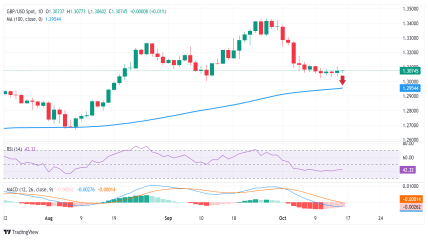02 Sep 2024
AUD/USD trades with mild gains above 0.6750 ahead of Chinese PMI data
The AUD/USD pair posts modest gains near 0.6770 after retreating from Friday’s high of 0.6815 during the early Asian session on Monday. However, the firmer US dollar after the US July's Personal Consumption Expenditures (PCE) Index might drag AUD/USD lower. The release of US Nonfarm Payrolls (NFP) for August on Friday will be in the spotlight and might offer some hints about the size and pace of US interest rate reduction by the US Federal Reserve (Fed).
Data released by the US Bureau of Economic Analysis on Friday showed that the US headline Personal Consumption Expenditures (PCE) Price Index rose 2.5% YoY in July, compared to the previous reading of 2.5%, softer than the estimation of 2.6%. The core PCE, which strips out volatile food and energy prices, climbed 2.6% YoY in July versus 2.6% prior, below the consensus of 2.7%.
The PCE reading may not have been dovish enough to convince the Fed to start with a 50 basis points (bps) cut, lifting the Greenback. The report comes with the market's pricing in nearly a 70% probability of the Fed cutting rates by 25 bps in September, while the chance of the Fed cutting rates by 50 bps is 30%, according to the CME FedWatch Tools.
On the other hand, the monetary policy divergence between the dovish Fed and the hawkish Reserve Bank of Australia (RBA) might limit the pair's downside in the near term. The RBA deputy governor Andrew Hauser stated on Friday that the Australian central bank will not follow the Fed and cut interest rates this year as inflation remains high and the 4.35% cash rate is not very high by global standards.
Elsewhere, the Chinese NBS Purchasing Managers' Index (PMI) was mixed in August. The country’s Manufacturing PMI declined to 49.1 in August, compared to 49.54 in the previous reading, missing the market expectation of 49.5. Meanwhile, Non-Manufacturing PMI improved to 50.3 in August versus 50.2 prior, above the 50.0 estimated.
Investors will shift their attention to the Chinese Caixin Manufacturing PMI for August, which is due on Monday. The weaker-than-expected outcome could drag the China-proxy Australian Dollar (AUD) lower as China is a major trading partner to Australia.











